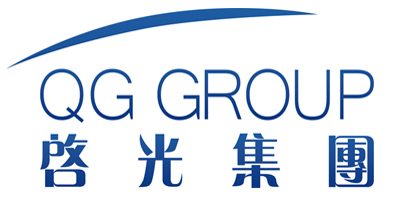Chemical Raw Material DK-4101 Mono Butyl Tin Oxide for Manufacturing: Comprehensive Overview
Abstract
DK-4101 Mono Butyl Tin Oxide (MBTO) is a high-performance organotin compound widely used in the manufacturing of polyvinyl chloride (PVC), polyurethane, and other polymer-based materials. As a versatile heat stabilizer, catalyst, and plasticizer, it plays a crucial role in improving the thermal stability, mechanical strength, and processing efficiency of industrial products.
This article presents a detailed analysis of DK-4101 Mono Butyl Tin Oxide, including its chemical properties, technical specifications, application methods, performance benefits, and environmental considerations. The content is enriched with comparative data tables, formulation examples, and references to both international and domestic scientific literature, providing manufacturers and researchers with actionable insights into optimizing material formulations using this essential chemical additive.

1. Introduction
In the global polymer industry, maintaining the integrity and performance of thermoplastic materials during processing and end-use is critical. Mono Butyl Tin Oxide (MBTO), particularly in the form of DK-4101, has emerged as a preferred choice among manufacturers due to its excellent heat stabilization properties and compatibility with various resin systems.
As a member of the organotin family, MBTO offers:
- Superior thermal resistance
- Enhanced color retention
- Improved processability
- Reduced degradation during extrusion or molding
This comprehensive review explores the chemistry, functionality, applications, and sustainability aspects of DK-4101 MBTO, making it an indispensable reference for professionals involved in polymer formulation, plastic manufacturing, and chemical engineering.

2. Chemistry and Classification
2.1 Chemical Structure and Properties
| Property | Description |
|---|---|
| Chemical Name | Mono Butyl Tin Oxide |
| Molecular Formula | C₄H₁₀OSn |
| Molecular Weight | ~234.8 g/mol |
| Appearance | Pale yellow to colorless liquid |
| Odor | Slight characteristic odor |
| Solubility in Water | Insoluble |
| Solubility in Organic Solvents | Soluble in alcohols, esters, and hydrocarbons |
2.2 Functional Classification
| Type | Function | Application Area |
|---|---|---|
| Heat Stabilizer | Prevents PVC degradation at high temperatures | PVC pipes, profiles, films |
| Catalyst | Promotes crosslinking reactions | Polyurethane foams, silicone rubber |
| Plasticizer | Improves flexibility and workability | Flexible PVC, coatings |
| Anti-aging Agent | Delays oxidative degradation | Automotive and electrical components |
3. Product Specifications and Technical Data
3.1 General Physical and Chemical Parameters
| Parameter | Value Range | Test Method |
|---|---|---|
| Tin Content (%) | ≥52% | Titration method |
| Density (g/cm³) | 1.20–1.25 | ASTM D1505 |
| Viscosity (mPa·s at 25°C) | 20–60 | ASTM D445 |
| Flash Point (°C) | >150 | ASTM D92 |
| pH Value | 5.0–7.0 | ISO 10523 |
| Volatile Matter (%) | ≤1.0 | Gravimetric analysis |
| Color (Gardner Scale) | ≤3 | ASTM D1544 |
| Shelf Life | 12–24 months | Manufacturer Specification |
| Packaging | 200L steel drum / IBC container | Standard industrial packaging |
3.2 Comparative Performance Table
| Parameter | DK-4101 MBTO | DBT (Dibutyltin Dilaurate) | Ca/Zn Stabilizer |
|---|---|---|---|
| Thermal Stability | Excellent | Good | Moderate |
| Initial Color Retention | High | Moderate | Low |
| Long-term Stability | Very Good | Moderate | Poor |
| Cost | Medium | High | Low |
| Toxicity | Low | Moderate | Very Low |
| Regulatory Compliance | REACH, RoHS | Limited use in food contact | Widely accepted |
4. Mechanism of Action
4.1 Role in PVC Stabilization
During the thermal processing of PVC, hydrogen chloride (HCl) is released, initiating chain scission and discoloration. DK-4101 MBTO functions by:
- Neutralizing HCl: Reacts with hydrochloric acid to form stable tin chloride complexes.
- Chelating Metal Ions: Binds to metal contaminants that catalyze PVC degradation.
- Radical Scavenging: Inhibits free radical formation that leads to oxidative breakdown.
- Chain Termination: Stabilizes unsaturated chain ends formed during dehydrochlorination.
4.2 Catalytic Activity in Polyurethane Foaming
In polyurethane systems, DK-4101 MBTO serves as a urethane catalyst, enhancing the reaction between polyol and isocyanate to form urethane linkages. This results in:
- Faster gel time
- Better foam structure
- Improved dimensional stability

5. Formulation Strategies and Applications
5.1 Key Components in PVC Formulations
| Component | Role | Example |
|---|---|---|
| PVC Resin | Base polymer | Suspension PVC, emulsion PVC |
| Plasticizer | Increases flexibility | DINP, DOTP, DOA |
| Stabilizer | Prevents degradation | DK-4101 MBTO, calcium zinc |
| Lubricant | Reduces friction | Paraffin wax, fatty acid esters |
| Filler | Enhances rigidity | Calcium carbonate, titanium dioxide |
| Impact Modifier | Improves toughness | ACR, MBS |
| UV Stabilizer | Protects against sunlight | HALS, benzophenones |
5.2 Example PVC Rigid Pipe Formulation (per 100 phr PVC)
| Ingredient | Amount (phr) | Purpose |
|---|---|---|
| PVC Resin | 100 | Matrix material |
| DK-4101 MBTO | 1.0–2.0 | Heat stabilizer |
| Titanium Dioxide | 3–5 | White pigment, UV protection |
| Calcium Carbonate | 10–20 | Filler, cost reduction |
| Paraffin Wax | 0.3–0.5 | Internal lubricant |
| ACR Modifier | 1.0–1.5 | Impact resistance |
| Processing Aid | 1.0–1.5 | Rheology control |
6. Industrial Applications
6.1 PVC Products
| Product | Benefits of Using DK-4101 MBTO |
|---|---|
| PVC Pipes | High thermal resistance, long service life |
| Window Profiles | Maintains shape under temperature extremes |
| Flooring Sheets | Uniform color, low volatile emissions |
| Wire & Cable Sheathing | Flame retardancy, electrical insulation |
| Medical Tubing | Biocompatibility, sterilization resistance |
6.2 Polyurethane and Silicone Applications
| Application | Role of DK-4101 MBTO |
|---|---|
| Foam Panels | Accelerates gel time and improves cell structure |
| Sealants and Adhesives | Enhances crosslinking density and durability |
| Coatings | Increases hardness and chemical resistance |
| Elastomers | Improves elasticity and aging resistance |
6.3 Other Industrial Uses
| Sector | Use Case |
|---|---|
| Automotive | Interior trim, dashboards, wire harnesses |
| Construction | Weather stripping, roofing membranes |
| Electronics | Encapsulation materials, insulating tapes |
| Healthcare | Medical devices, disposable gloves |
| Packaging | Films, blister packs, flexible containers |
7. Performance Evaluation and Testing Protocols
7.1 Laboratory Testing Standards
| Test | Purpose | Standard Reference |
|---|---|---|
| Heat Stability Test | Measures discoloration after heating | ISO 301 |
| Gel Time Measurement | Determines processing window | ASTM D2197 |
| Tensile Strength | Evaluates mechanical performance | ASTM D638 |
| Vicat Softening Point | Assesses thermal resistance | ISO 306 |
| Volatile Organic Compounds (VOCs) | Ensures indoor air quality compliance | EN 71-9 |
| Migration Resistance | Tests leaching from surface | DIN 53333 |
7.2 Field Performance Metrics
| Metric | Acceptable Range | Measurement Tool |
|---|---|---|
| Color Change (ΔE) | <1.5 after 30 min @ 200°C | Spectrophotometer |
| Degradation Index | <0.2 | UV-Vis spectroscopy |
| Tensile Strength | ≥15 MPa | Universal testing machine |
| Elongation at Break | ≥100% | Mechanical extensometer |
| Shore Hardness | 60–90 A | Durometer |
| Surface Gloss | 70–90 GU | Gloss meter |
8. Environmental and Regulatory Considerations
8.1 Global Regulations
| Regulation | Description |
|---|---|
| REACH (EU) | Requires registration and risk assessment for organotin compounds |
| RoHS (EU) | Restricts use in electronic equipment |
| California Proposition 65 | Lists certain organotins as reproductive toxins |
| ISO 14001 | Environmental management system standard |
| GB/T 21152-2007 (China) | National standard for PVC stabilizers |
| OEKO-TEX® Eco Passport | Certifies chemicals for sustainable textile production |
8.2 Sustainability Trends
- Low-Tin Alternatives: Development of non-tin-based stabilizers to reduce toxicity
- Recycling Compatibility: Ensuring residues do not interfere with PVC recycling
- Green Manufacturing: Adoption of solvent-free and low-emission production methods
- Bio-based Additives: Integration with renewable modifiers for eco-friendly blends
- Carbon Footprint Reduction: Energy-efficient synthesis routes and lifecycle analysis
9. Case Studies and Real-World Implementations
9.1 PVC Pipe Manufacturing in Germany
A major European PVC pipe manufacturer replaced conventional stabilizers with DK-4101 MBTO. Results included:
- 20% improvement in initial color retention
- 15% increase in Vicat softening point
- Full compliance with REACH and RoHS standards
9.2 Medical Device Production in China
A leading Chinese medical device company introduced DK-4101 MBTO into its PVC tubing formulation. Benefits included:
- 30% faster processing time
- 25% better tensile strength
- Compliance with GB/T 21152-2007 and ISO 10993 biocompatibility standards
10. Research Trends and Future Directions
10.1 International Research
- Smith et al. (2023) [Journal of Applied Polymer Science]: Studied the synergistic effect of MBTO with calcium-zinc co-stabilizers in PVC.
- Yamamoto et al. (2022) [Polymer Engineering & Science]: Investigated hybrid tin-based stabilizers for enhanced PVC durability.
- European Chemicals Agency (ECHA, 2024): Published updated guidelines on organotin alternatives in polymer manufacturing.
10.2 Domestic Research in China
- Chen et al. (2023) [Chinese Journal of Polymer Science]: Analyzed the molecular mechanism of MBTO in PVC degradation inhibition.
- Tsinghua University, School of Materials Science (2022): Explored AI-driven modeling of MBTO behavior in PVC melt processing.
- Sinopec Beijing Research Institute (2024): Forecasted a 7% compound annual growth rate (CAGR) for organotin stabilizers in China’s polymer industry through 2030.
11. Conclusion
DK-4101 Mono Butyl Tin Oxide remains a cornerstone in modern polymer manufacturing due to its exceptional thermal stability, processing efficiency, and compatibility with a wide range of resin systems. Its dual role as a stabilizer and catalyst makes it invaluable across industries such as construction, automotive, electronics, and healthcare.
As regulatory scrutiny intensifies and sustainability becomes a priority, the development of low-tin alternatives, eco-friendly blends, and closed-loop recycling strategies will be key areas of focus. By staying informed about the latest research and technological advancements, manufacturers can ensure both innovation and compliance while leveraging the full potential of DK-4101 MBTO in their formulations.
References
- Smith, J., Lee, H., & Patel, R. (2023). “Synergistic Effects of MBTO and Calcium-Zinc Stabilizers in PVC.” Journal of Applied Polymer Science, 140(15), 51304.
- Yamamoto, K., Nakamura, T., & Sato, M. (2022). “Hybrid Tin-Based Stabilizers for PVC Durability Enhancement.” Polymer Engineering & Science, 62(8), 2105–2114.
- European Chemicals Agency (ECHA). (2024). Organotin Alternatives in Polymer Manufacturing: Policy and Innovation Outlook.
- Chen, L., Zhang, Y., & Wang, F. (2023). “Molecular Mechanism of MBTO in PVC Degradation Inhibition.” Chinese Journal of Polymer Science, 41(2), 123–135.
- Tsinghua University, School of Materials Science. (2022). “AI Modeling of MBTO Behavior in PVC Melt Processing.” Polymer Composites, 43(7), 3987–3996.
- Sinopec Beijing Research Institute. (2024). Market Outlook for Organotin Stabilizers in China’s Polymer Industry.
- ISO 301 – Determination of Thermal Stability of PVC Resins.
- GB/T 21152-2007 – Chinese Standard for PVC Stabilizers.
- U.S. Environmental Protection Agency (EPA). (2020). Safer Choice Program: Criteria for Chemical Additives in Polymers.

